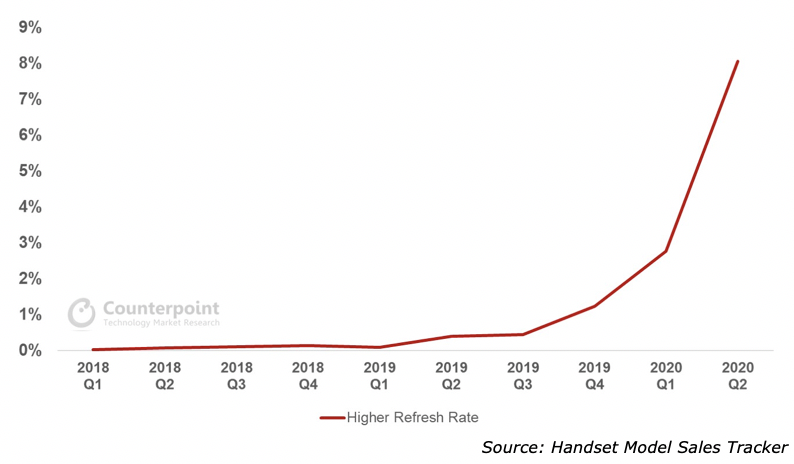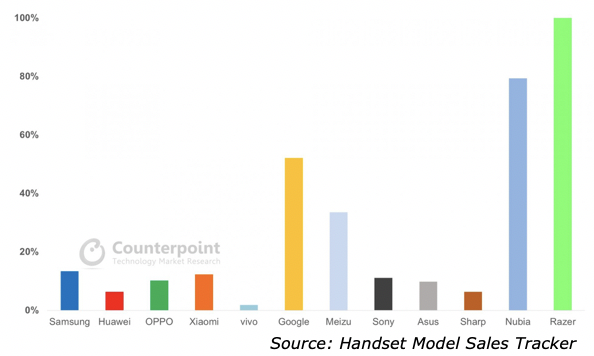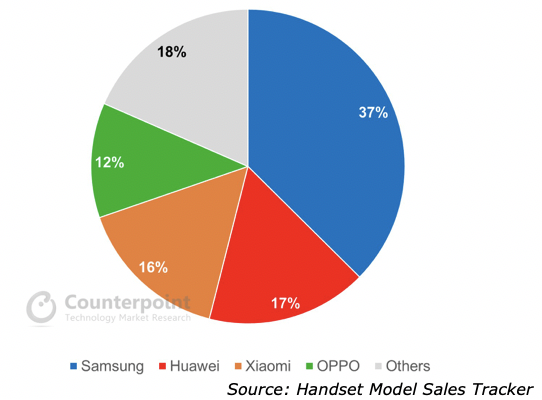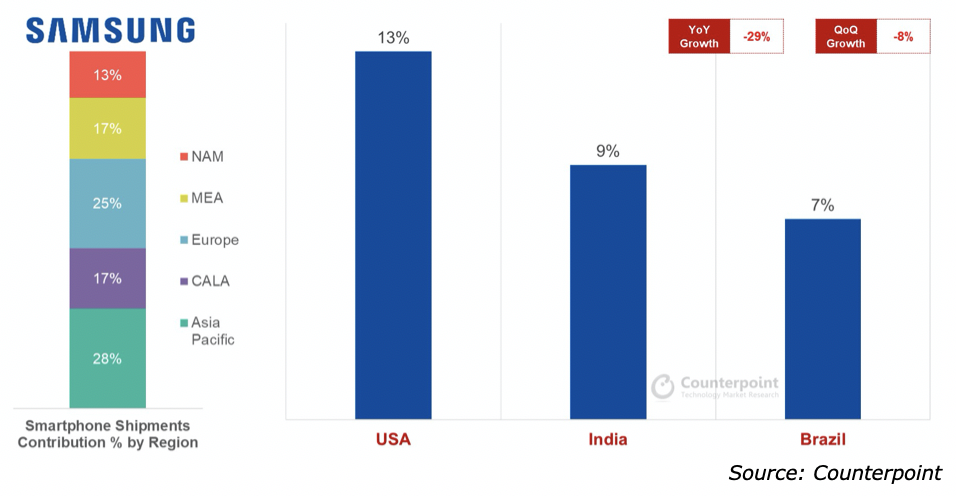Vertical Divider
Mid-Range and High End Smartphones Adopt High Refresh Rates Despite Content Deficit
Higher refresh rate are all the rage because they provide smoother scrolling and animation; important factors in gaming or 4K videos. In most cases, customers find it hard to return to a lower specification after experiencing such quality. Higher refresh also consumes more power even though content (such as games) typically don’t support higher refresh rates. Nonetheless, companies are launching higher refresh rate products, thus increasing their penetration. First introduced to the market in 2017, higher refresh rate products’ presence in the market has increased sharply since the third quarter of 2019, reaching 8.1% in Q2 2020 as shown below.
Figure 1: Market Penetration Rate of Higher Refresh Rate (Above 90Hz) Smartphones
Tier 1 companies like Samsung, Huawei, OPPO and Xiaomi are aggressively adopting such specifications for their flagship products, while smaller companies that focus on niche segments like gaming phone are also increasing such products in their portfolios.
Figure 2: Market Penetration Rate of Higher Refresh Rate (Above 90Hz) Smartphones by Major Brands (Q2 2020)
Figure 2: Market Penetration Rate of Higher Refresh Rate (Above 90Hz) Smartphones by Major Brands (Q2 2020)
Samsung ranked first in this segment in Q2 2020 with its flagship S20 series adopting this specification. Samsung is also adopting LTPO, which can reduce the power consumption of the display by 15% to offset the refresh rate increases.
Figure 3: Market Share of Higher Refresh Rate (Above 90Hz) Smartphones by Brands (Q2 2020)
Figure 3: Market Share of Higher Refresh Rate (Above 90Hz) Smartphones by Brands (Q2 2020)
Even though Apple will continue to use 60Hz refresh rates in the iPhone 12, due to the lack of drivers, their OLED displays are built with high refresh rate capability, so it should be adopted in 2021 at the latest. Mid-range smartphones are also using high refresh rates as a differentiator forecasting even higher penetration.
Figure 4: Samsung Smartphone's Top 3 Countries Shipment Contribution: Q2'20
Figure 4: Samsung Smartphone's Top 3 Countries Shipment Contribution: Q2'20
|
Contact Us
|
Barry Young
|




